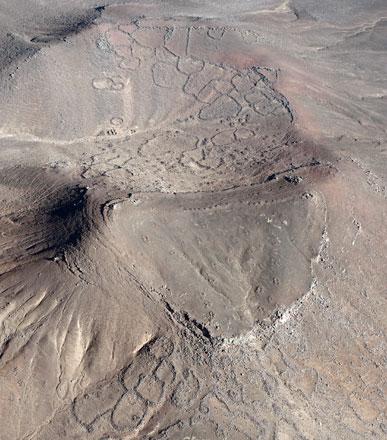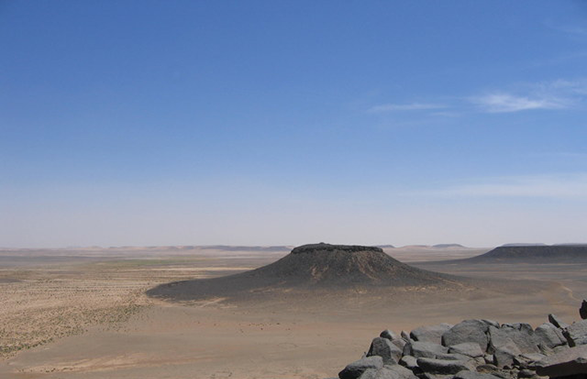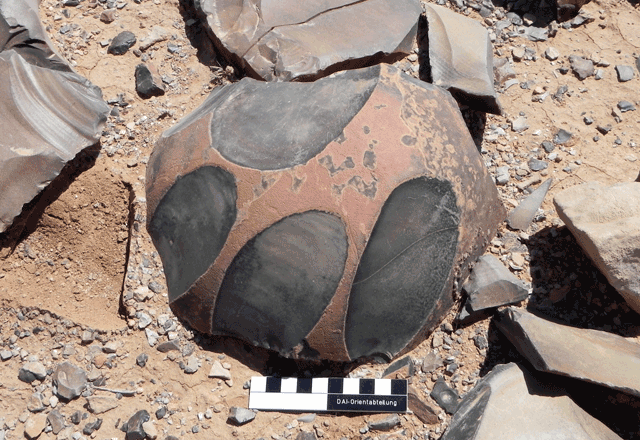You are here
German archaeologist elaborates work of Jawa Hinterland Project
By Saeb Rawashdeh - Oct 29,2017 - Last updated at Oct 29,2017

Bernd Mueller-Neuhof
AMMAN — Fortifications and the oldest known dam in the world built around 3,600BC are the main characteristics of Jawa,a site 60km northeast of Azraq, according to a German archaeologist.
During a lecture titled “Pre-historic Hillforts in the Desert”, held at the British Institute in Amman, Bernd Mueller-Neuhof, from the German Archaeological Institute, Berlin,elaborated the work of Jawa Hinterland Project which he has been leading from 2010.
“For the long time, Jawa was in the unique position for the archaeology of the Middle East, it was so far on the east and quite isolated for a big site with some connections with the Jordan Valley and probable connections to the north,” the scholar stated, adding that one step closer to come to the explanation of the site was discovery of flint mines east of the basalt desert, in which characteristic flint tools, called cortical scrapers, have been produced.
This kind of tools was spread throughout the Middle East from 5th to early mid -3rd millennium BC, he continued, noting that it was a common tool from Egypt and Anatolia, from the Levantine coast to Iraq.
“The next step was to link these mines to Jawa, because they belong to the same period,” he said.
One of the problems is the landscape of the eastern desert: “When you have a look at the landscape of harra, it is quietly difficult to cross it because of the dense surface cover with basalt boulders.”
Another problem in the area is the rain fall when it gets maximum 100 milliliters of rain, which is too little for rainfed agriculture, which needs at least 200 milliliters of rain per year, Mueller-Neuhof explained.
The archaeologist initially interpreted some linear structures in the close vicinity of Jawa as animal pens and camp sites, but it turned out very quickly that these were not animal pens but gardens —36 hectares of them in Jawa — with water canals.
“When it rains it can be very torrential so residents tried to catch as much rain as possible and use it for irrigation of their plants,” he stressed.
“After the first four years of this project, I’ve done some documentations about mines, the trade routes and communication routes, which hypothetically linked the mines with Jawa.” the expert added.
During last three field seasons of the Jawa Hinterland Project, the team has revealed a number of prehistoric hillfort sites, located on volcanoes in the basalt desert of northeast Jordan, Mueller-Neuhof continued, adding that these sites are additionally characterised by terraced gardens located on the slopes at the foot of their elevations and that was once irrigated by artificial run-off irrigation.
When we see this very well-organised fortifications and organised garden system and irrigation system and egalitarian type of dwellings “something is wrong”, he said.
“ These sites needed organised workforce and one thinks of stratified society with higher ranking chiefs, but we don’t have evidence which is quite unusual,” Mueller-Neuhof noted.
Radiocarbon dates from two of these sites give an occupation between the 2nd half of the 5th millennium BC and the middle of the 4th millennium BC, which is the Late Chalcolithic and the Early Bronze Age I (A and B) period.
The discovery of Late Chalcolithic/ Early Bronze Age terraced garden structures close to Jawa which were artificially irrigated in a highly sophisticated manner by rainwater harvesting, “has several far reaching consequences for our current knowledge about Jawa itself and the Late Chalcolithic and Early Bronze age of south Levant and adjacent regions”, the scholar explained.
According to Mueller-Neuhof, “the entire water harvesting system of Jawa shows a highly sophisticated adaptation to the local environmental conditions.
The water supply for Jawa and its population relied on two different and independent water resources: the local precipitation for irrigating the terraced gardens and the precipitation in the Jabel Druze region, which delayed arrival in the form of floodwater in the Wadi Rajjil.
Furthermore, the terraced gardens at Jawa are the earliest evidence so far for rainwater harvesting irrigation in southwestern Asia, Mueller-Neuhof concluded.
Related Articles
AMMAN — The irrigation system in the terraced gardens of the Black Desert, according to scholars, was probably the outcome of an indigenous
AMMAN — Archaeological research teams recently discovered several prehistoric forts on the hilltops located in the basalt desert and limesto
AMMAN — Flint tools, also called cortical scrapers, found in the Northern Badia offer clues to animal husbandry during the Early Bronze Age














